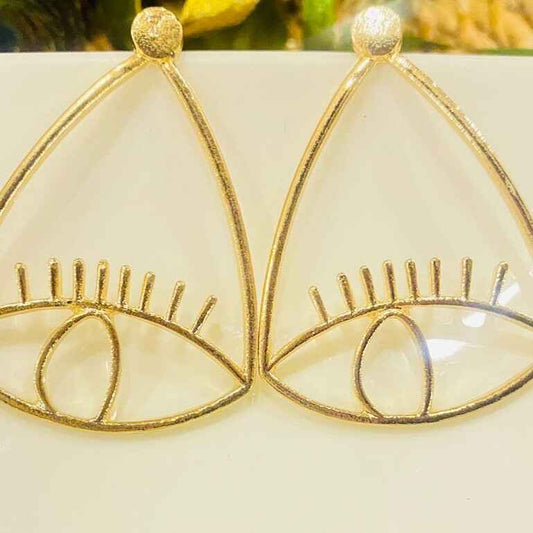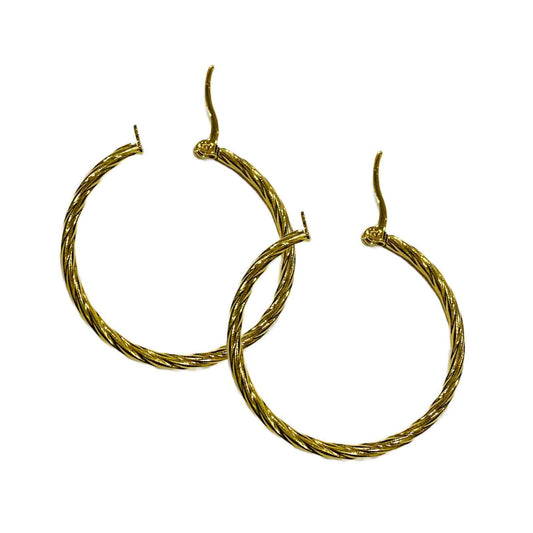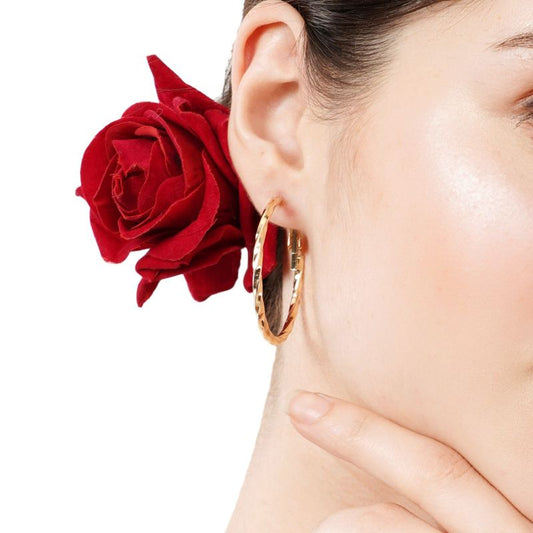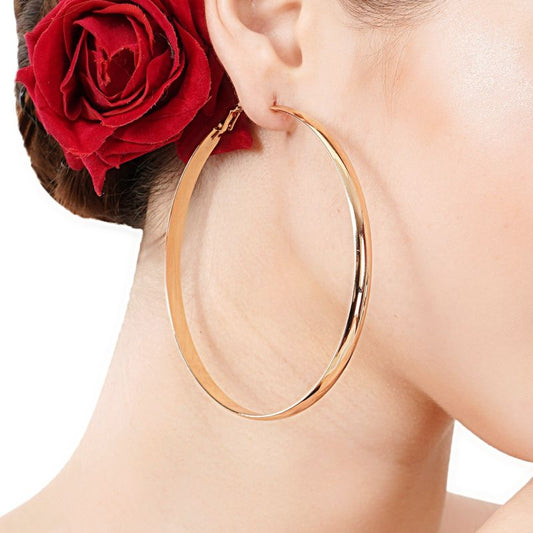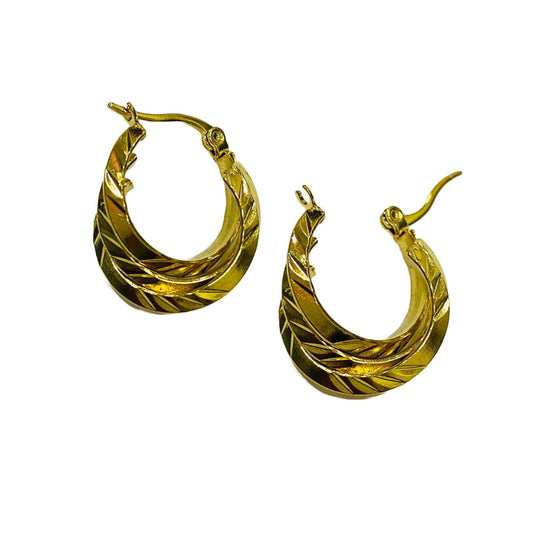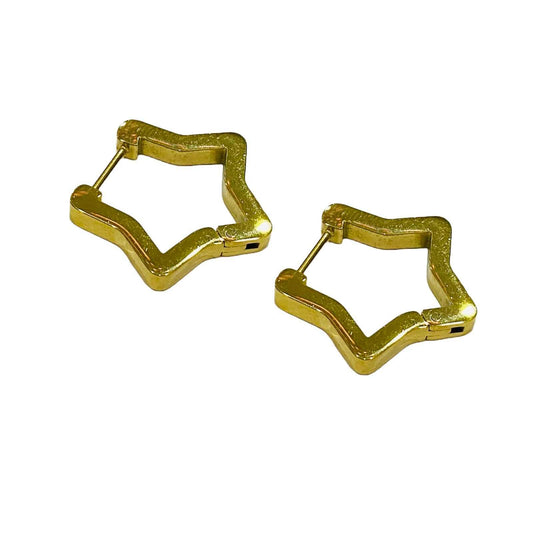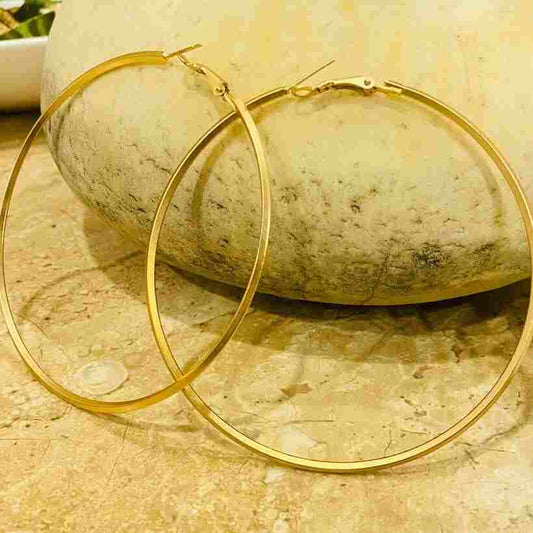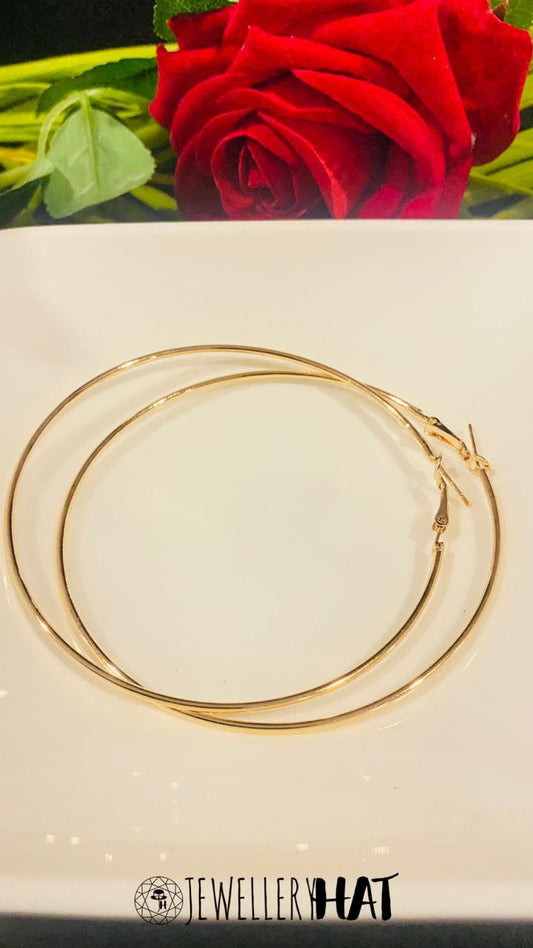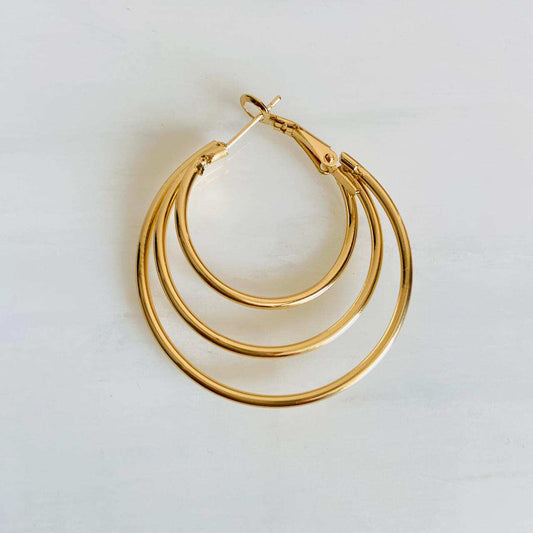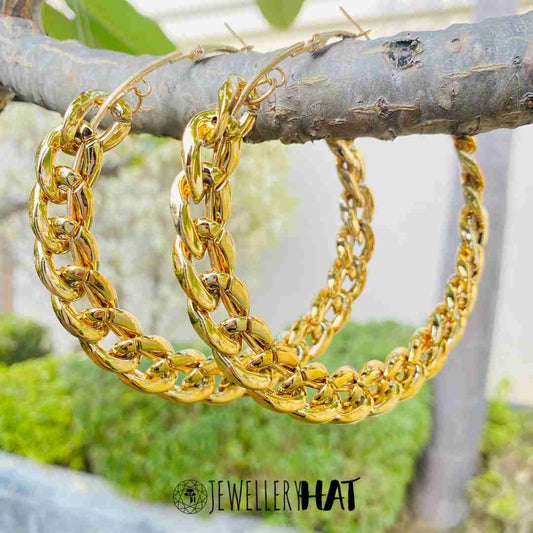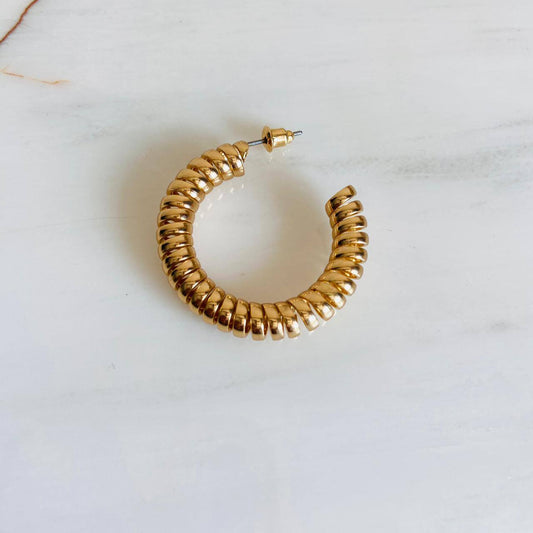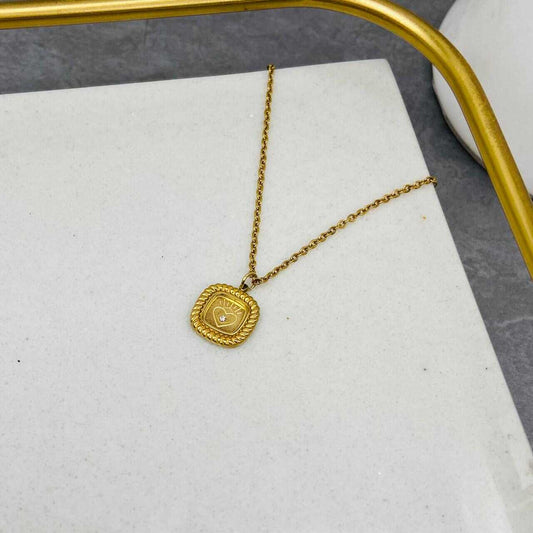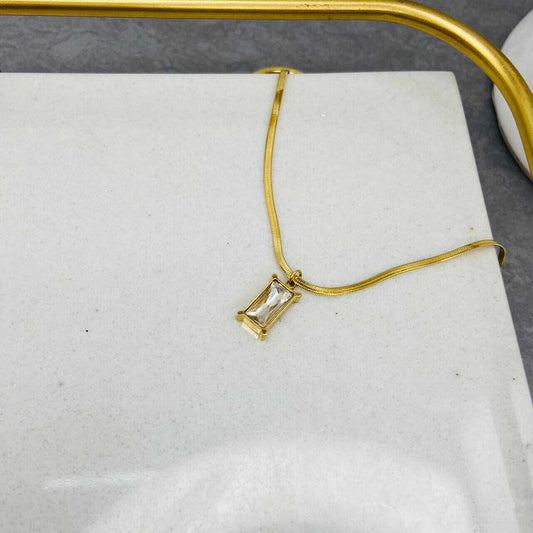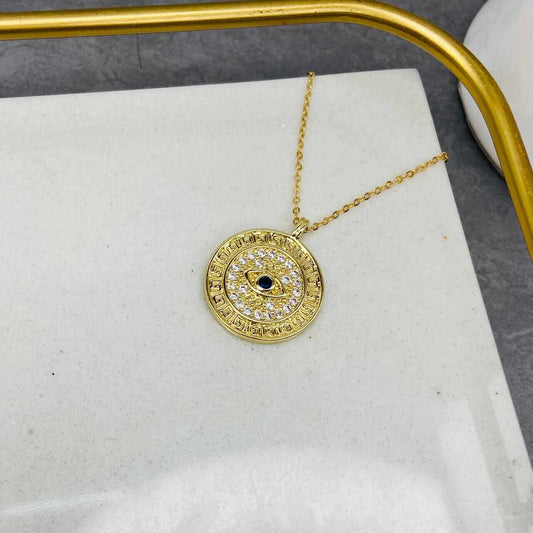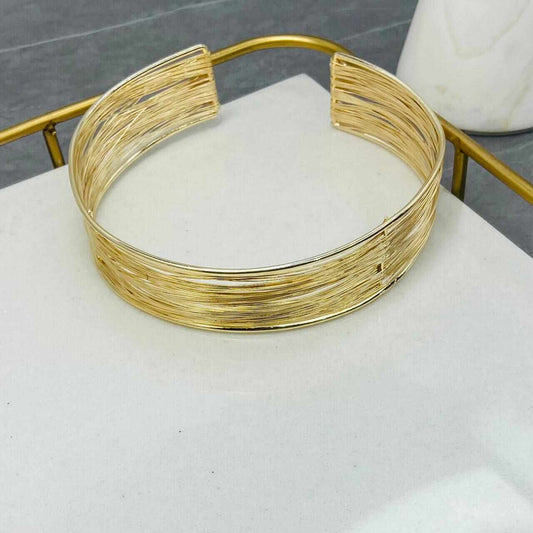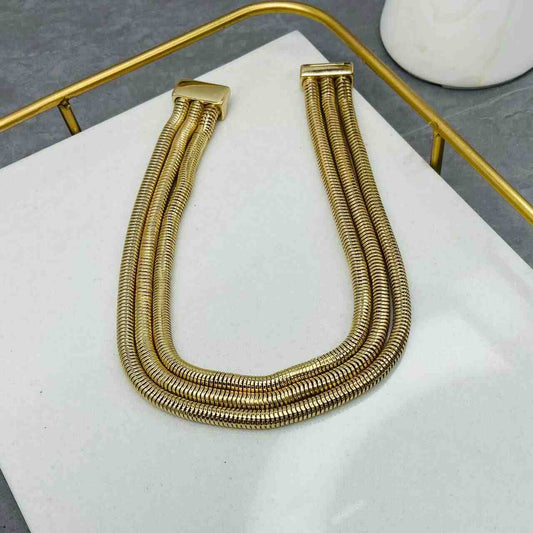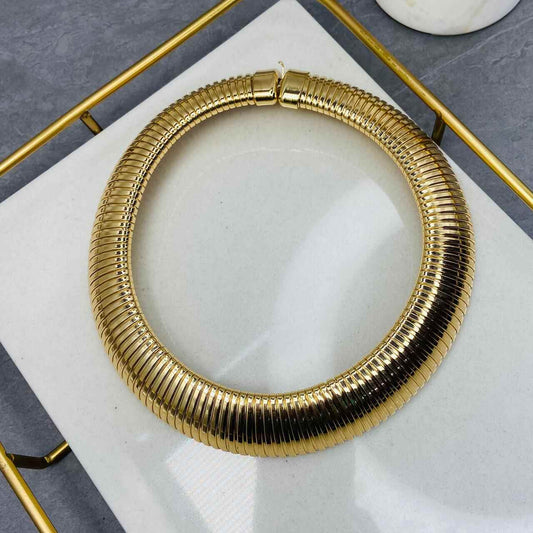-
Evil Eye Bracelets For Couples | Black Bracelet | White Bracelet | Beads Bracelet | Fashion Jewellery | April 2023
4.2 / 5.0
(859) 859 total reviews
Regular price From Rs. 249.00Regular priceUnit price / perRs. 799.00Sale price From Rs. 249.00Sale -
New Earrings Design | Eyes Earrings | Fashion Jewellery | December 2022
4.333333333 / 5.0
(24) 24 total reviews
Regular price Rs. 339.00Regular priceUnit price / perRs. 419.00Sale price Rs. 339.00Sold out -
Gold Hoops | Fashion Jewellery | February 2023
4.0 / 5.0
(7) 7 total reviews
Regular price Rs. 359.00Regular priceUnit price / perRs. 449.00Sale price Rs. 359.00Sale -
Gold Ear Rings for Women | Gold Plated Hoop Earrings | Imitation Jewellery
5.0 / 5.0
(2) 2 total reviews
Regular price From Rs. 379.00Regular priceUnit price / perRs. 879.00Sale price From Rs. 379.00Sold out -
Hoop Earrings For Women | Fashion Jewellery | February 2023
4.2 / 5.0
(5) 5 total reviews
Regular price Rs. 389.00Regular priceUnit price / perRs. 479.00Sale price Rs. 389.00Sale -
Earrings Design Artificial | Gold Plated Earrings for Girls | Artificial Jewelry
4.333333333 / 5.0
(6) 6 total reviews
Regular price Rs. 389.00Regular priceUnit price / perRs. 479.00Sale price Rs. 389.00Sold out -
Earrings Trending | Big Round Gold Plated Earring for Girls | Artificial Jewelry
4.333333333 / 5.0
(3) 3 total reviews
Regular price Rs. 389.00Regular priceUnit price / perRs. 479.00Sale price Rs. 389.00Sold out -
Hoop Earrings | Gold Plated Hoop Earrings for Women | Costume Jewellery
4.125 / 5.0
(8) 8 total reviews
Regular price From Rs. 389.00Regular priceUnit price / perRs. 889.00Sale price From Rs. 389.00Sold out -
Hoop Earrings for Women | Gold Plated Hoop Earrings | Imitation Jewellery
4.0 / 5.0
(4) 4 total reviews
Regular price From Rs. 389.00Regular priceUnit price / perRs. 889.00Sale price From Rs. 389.00Sold out -
Big Ear Ring | Hoops | Fashion Jewellery | February 2023
4.238095238 / 5.0
(21) 21 total reviews
Regular price Rs. 399.00Regular priceUnit price / perRs. 499.00Sale price Rs. 399.00Sold out -
Earrings Big Max Hoops from Our Hoops Attack Collection - Gold Plated Fashion Jewellery
4.470588235 / 5.0
(17) 17 total reviews
Regular price Rs. 399.00Regular priceUnit price / perRs. 499.00Sale price Rs. 399.00Sale -
Double Hoop Earrings | Fashion Jewellery | February 2023
4.0 / 5.0
(8) 8 total reviews
Regular price Rs. 399.00Regular priceUnit price / perRs. 489.00Sale price Rs. 399.00Sold out -
Big Size Earrings In Gold | Fashion Jewellery | December 2022
5.0 / 5.0
(1) 1 total reviews
Regular price Rs. 399.00Regular priceUnit price / perRs. 489.00Sale price Rs. 399.00Sold out -
Gold Hoop Earrings | Fashion Jewellery | February 2023
4.2 / 5.0
(5) 5 total reviews
Regular price Rs. 399.00Regular priceUnit price / perRs. 499.00Sale price Rs. 399.00Sold out -
Large Hoop Earrings | Fashion Jewellery | February 2023
4.333333333 / 5.0
(3) 3 total reviews
Regular price Rs. 399.00Regular priceUnit price / perRs. 499.00Sale price Rs. 399.00Sale -
Thick Gold Hoop Earrings | Fashion Jewellery | February 2023
4.0 / 5.0
(5) 5 total reviews
Regular price Rs. 399.00Regular priceUnit price / perRs. 499.00Sale price Rs. 399.00Sale -
Small Gold Hoop Earrings | Fashion Jewellery | February 2023
4.166666667 / 5.0
(6) 6 total reviews
Regular price Rs. 399.00Regular priceUnit price / perRs. 495.00Sale price Rs. 399.00Sale -
Rose Gold Chain | Necklace And Earrings Set | Artificial Jewellery | Premium Quality
4.0 / 5.0
(3) 3 total reviews
Regular price From Rs. 399.00Regular priceUnit price / perRs. 499.00Sale price From Rs. 399.00Sale -
Rose Gold Necklace | Earrings And Necklace Set | Imitation Jewellery | Best Quality
4.0 / 5.0
(4) 4 total reviews
Regular price Rs. 399.00Regular priceUnit price / perRs. 499.00Sale price Rs. 399.00Sale -
Rose Gold Earrings | And Necklace Set | Fashion Jewellery | Waterproof Technology
4.333333333 / 5.0
(3) 3 total reviews
Regular price From Rs. 399.00Regular priceUnit price / perRs. 499.00Sale price From Rs. 399.00Sale -
Rose Gold Stud Earrings | Necklace Set | Costume Jewellery | Anti Tarnish
4.2 / 5.0
(10) 10 total reviews
Regular price Rs. 399.00Regular priceUnit price / perRs. 499.00Sale price Rs. 399.00Sale -
Rose Gold Pendant | And Earrings Set | Fancy Jewellery | Superior Quality
4.0 / 5.0
(1) 1 total reviews
Regular price From Rs. 399.00Regular priceUnit price / perRs. 499.00Sale price From Rs. 399.00Sale -


Rose Gold Necklace Set | Earrings And Necklace Included | Western Jewellery | Light Weight Tech
4.0 / 5.0
(7) 7 total reviews
Regular price From Rs. 399.00Regular priceUnit price / perRs. 499.00Sale price From Rs. 399.00Sale -
Ladies Gold Ring With Emerald Stone | Imitation Jewellery
4.8 / 5.0
(523) 523 total reviews
Regular price Rs. 399.00Regular priceUnit price / perRs. 499.00Sale price Rs. 399.00Sale
Featured By Jewellery Hat
-

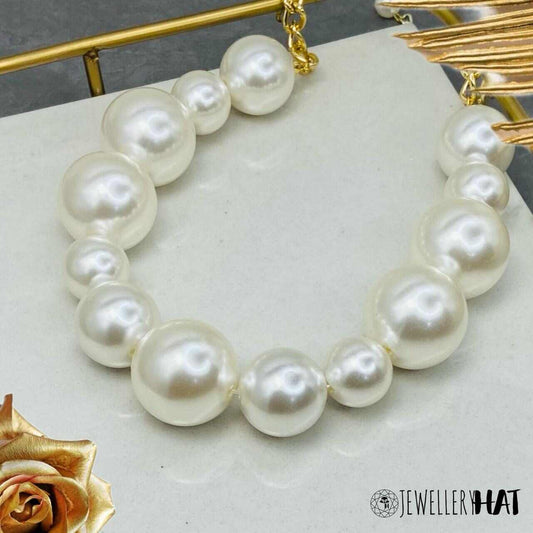 Sale
SalePearl Choker
Regular price Rs. 2,199.00Regular priceUnit price / perRs. 2,749.00Sale price Rs. 2,199.00Sale -

 Sale
SaleEar Hoops Small
Regular price Rs. 499.00Regular priceUnit price / perRs. 629.00Sale price Rs. 499.00Sale -
Multi Layer Gold Necklace
Regular price Rs. 559.00Regular priceUnit price / perRs. 699.00Sale price Rs. 559.00Sale -

 Sale
SalePisces Necklace
Regular price Rs. 699.00Regular priceUnit price / perRs. 869.00Sale price Rs. 699.00Sale -

 Sale
SaleSagittarius Necklace
Regular price Rs. 699.00Regular priceUnit price / perRs. 869.00Sale price Rs. 699.00Sale -

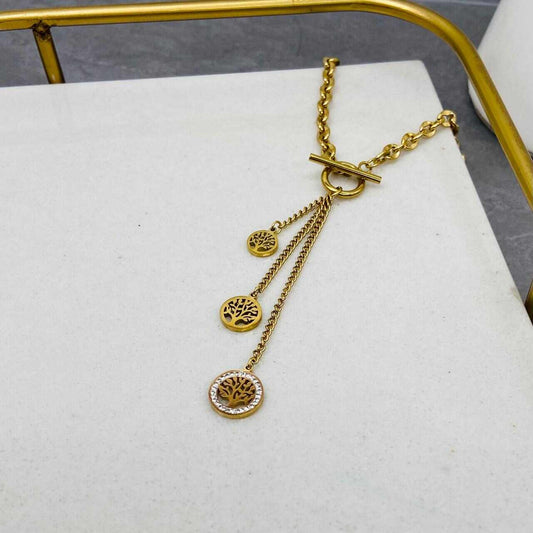 Sale
SaleTree Of Life Pendant
Regular price Rs. 1,399.00Regular priceUnit price / perRs. 1,749.00Sale price Rs. 1,399.00Sale -

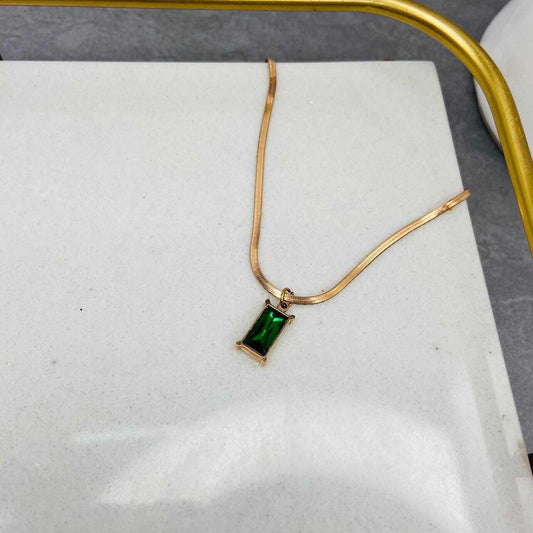 Sale
SaleJewellery Emerald
Regular price Rs. 799.00Regular priceUnit price / perRs. 989.00Sale price Rs. 799.00Sale -

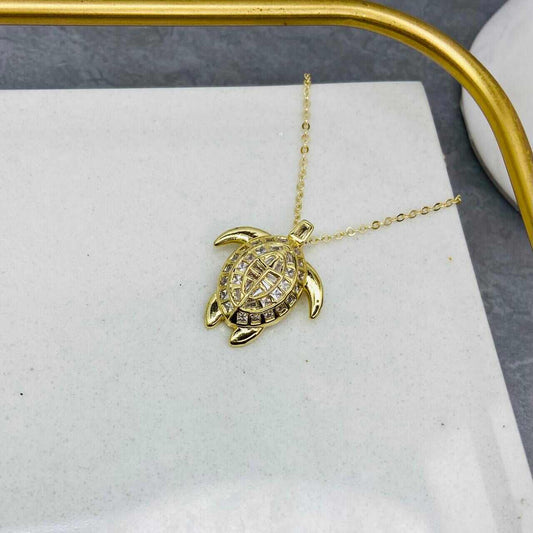 Sale
SaleTurtle Necklace
Regular price Rs. 999.00Regular priceUnit price / perRs. 1,249.00Sale price Rs. 999.00Sale -

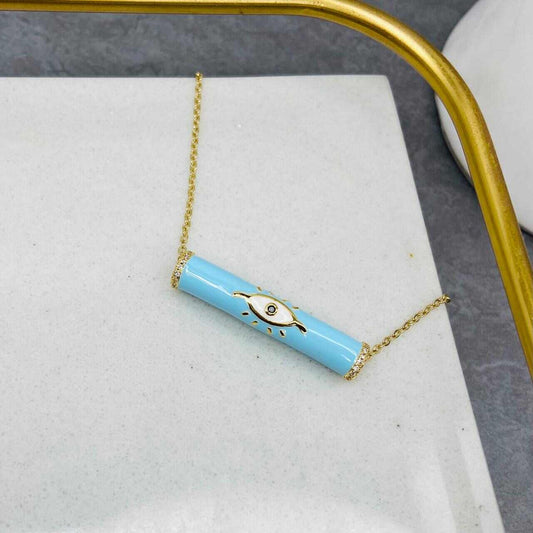 Sale
SaleNecklace With An Eye
Regular price Rs. 799.00Regular priceUnit price / perRs. 999.00Sale price Rs. 799.00Sale -

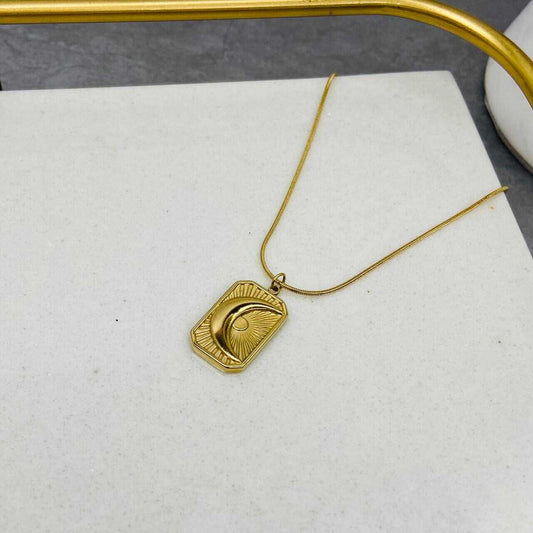 Sale
SaleNecklace Of The Moon
Regular price Rs. 999.00Regular priceUnit price / perRs. 1,249.00Sale price Rs. 999.00Sale -

 Sale
SaleNecklace Flower
Regular price Rs. 1,399.00Regular priceUnit price / perRs. 1,749.00Sale price Rs. 1,399.00Sale -

 Sale
SaleNecklace Heart Shape
Regular price Rs. 599.00Regular priceUnit price / perRs. 749.00Sale price Rs. 599.00Sale -

 Sale
SaleHeart Shape Necklace
Regular price Rs. 599.00Regular priceUnit price / perRs. 749.00Sale price Rs. 599.00Sale -

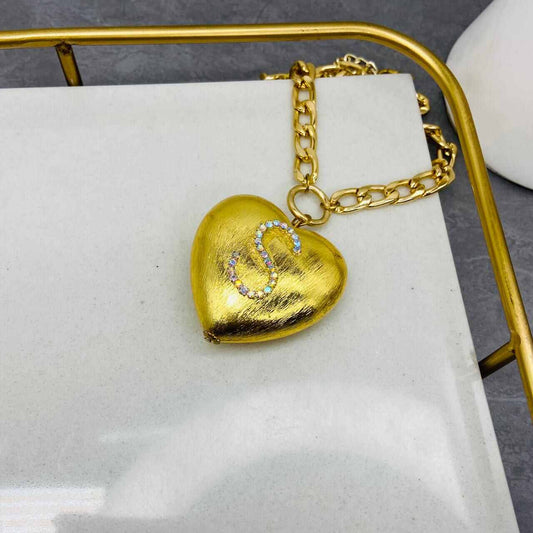 Sale
SaleLocket Heart Shape
Regular price Rs. 1,499.00Regular priceUnit price / perRs. 1,879.00Sale price Rs. 1,499.00Sale -
Gold Plated Necklace For Women
Regular price Rs. 999.00Regular priceUnit price / perRs. 1,249.00Sale price Rs. 999.00Sale -
Gold Plated Chain With Guarantee
Regular price Rs. 999.00Regular priceUnit price / perRs. 1,249.00Sale price Rs. 999.00Sale -
Gold Plated Necklace Long
Regular price Rs. 999.00Regular priceUnit price / perRs. 1,249.00Sale price Rs. 999.00Sale -

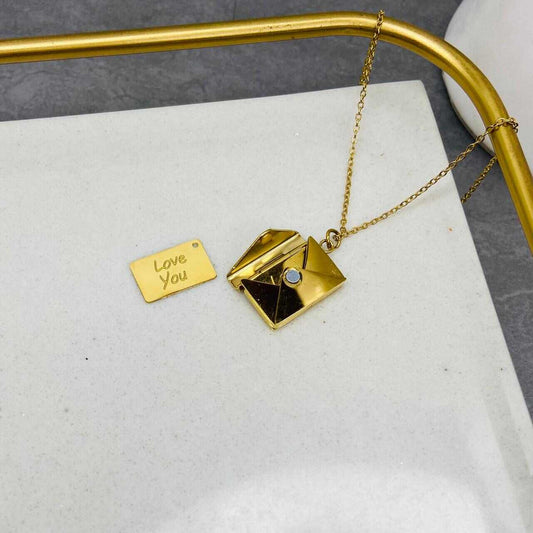 Sale
SaleGold Necklace Plated
Regular price Rs. 1,099.00Regular priceUnit price / perRs. 1,379.00Sale price Rs. 1,099.00Sale -

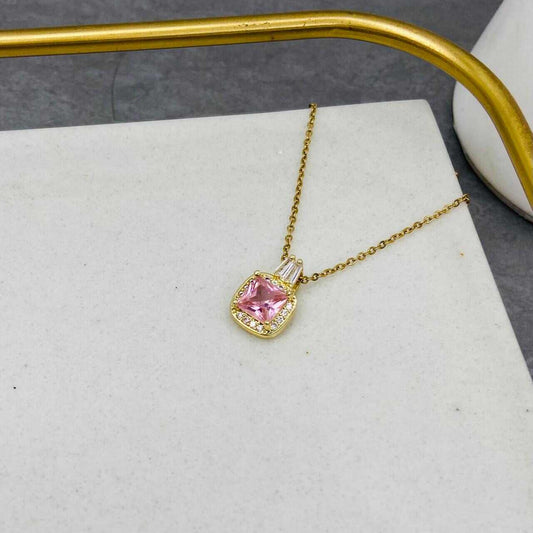 Sale
SaleGold Plated Necklace
Regular price Rs. 999.00Regular priceUnit price / perRs. 1,249.00Sale price Rs. 999.00Sale -
Bracelet Four Leaf Clover
Regular price Rs. 999.00Regular priceUnit price / perRs. 1,249.00Sale price Rs. 999.00Sale -
Bracelet With Four Leaf Clover
Regular price Rs. 999.00Regular priceUnit price / perRs. 1,249.00Sale price Rs. 999.00Sale -
Gold Plated Choker Necklace
Regular price Rs. 1,499.00Regular priceUnit price / perRs. 1,879.00Sale price Rs. 1,499.00Sale -
Necklace Gold Covering
Regular price Rs. 1,599.00Regular priceUnit price / perRs. 1,999.00Sale price Rs. 1,599.00Sale -
Gold Covering Necklace
Regular price Rs. 2,399.00Regular priceUnit price / perRs. 2,999.00Sale price Rs. 2,399.00Sale -

 Sale
SaleRainbow Necklace
Regular price Rs. 1,649.00Regular priceUnit price / perRs. 2,069.00Sale price Rs. 1,649.00Sale
Collection: Imitation Jewellery
Introduction to Imitation Jewellery :-
Imitation jewelry, also known as costume jewelry or fashion jewelry, is designed to resemble fine jewelry but is made with less expensive materials. Unlike fine jewelry, which is often made with precious metals and gemstones, imitation jewelry is made with a variety of materials such as glass, plastic, and base metals like brass or copper.
Imitation jewelry has been popular for centuries, dating back to ancient civilizations that used glass and enamel to create colorful and intricate jewelry designs. In the 18th and 19th centuries, costume jewelry became popular in Europe, and by the 20th century, mass production techniques allowed imitation jewelry to be produced on a larger scale.
Today, imitation jewelry is a popular and affordable way to accessorize and add some sparkle and style to an outfit. It can be found in a wide variety of styles, from classic to trendy, and is often used to create statement pieces or to add a pop of color or texture to an outfit.
With advances in manufacturing techniques and technology, imitation jewelry is becoming increasingly high-quality and durable, and is often indistinguishable from fine jewelry. Additionally, many designers and manufacturers are incorporating sustainable and ethical practices into their production processes, making imitation jewelry a more environmentally and socially responsible choice.
Imitation Jewellery :-
Imitation jewelry, also known as costume jewelry or fashion jewelry, is available in a wide variety of styles and designs. Here are some of the most popular types of imitation jewelry:
-
Necklaces: Imitation necklaces come in many styles, including statement necklaces, chokers, pendants, and long chains. They can be made with a variety of materials, including beads, pearls, and imitation gemstones.
-
Earrings: Imitation earrings can be studs, hoops, or dangly styles. They can be made with a variety of materials, including crystals, pearls, and colourful beads.
-
Bracelets: Imitation bracelets can be cuffs, bangles, or chain styles. They can be made with a variety of materials, including beads, leather, and charms.
-
Rings: Imitation rings can be statement rings, stacking rings, or simple bands. They can be made with a variety of materials, including crystals, imitation gemstones, and gold or silver plating.
-
Brooches: Imitation brooches can be used to add a touch of glamor to a jacket, scarf, or hat. They can be made with a variety of materials, including crystals, rhinestones, and imitation pearls.
-
Body Jewelry: Imitation body jewelry can include belly chains, anklets, and arm cuffs. They can be made with a variety of materials, including beads, chains, and rhinestones.
-
Hair Accessories: Imitation hair accessories can include headbands, hair clips, and hairpins. They can be made with a variety of materials, including pearls, crystals, and colourful beads.
Imitation jewelry allows people to experiment with different styles and trends without breaking the bank. With so many options available, it's easy to find a piece of imitation jewelry that suits your personal style and budget.
Types Of Imitation Jewellery :-
Imitation jewellery, also known as fashion jewellery or costume jewellery, is designed to resemble fine jewelry but is made with less expensive materials. Here are some common types of imitation jewelry:
-
Cubic zirconia jewelry: Cubic zirconia is a synthetic gemstone that looks similar to a diamond. It is often used in imitation jewelry to create the look of a high-end piece without the cost.
-
Rhinestone jewelry: Rhinestones are small, faceted stones made from glass or plastic. They are often used in imitation jewelry to mimic the sparkle and shine of diamonds.
-
Beaded jewelry: Beaded jewelry is made from a variety of materials, such as glass, plastic, or wood beads. These pieces are often colourful and whimsical, and can be used to create a bohemian or eclectic look.
-
Enamel jewelry: Enamel is a glass-like coating that can be applied to metal to create a variety of colours and designs. Enamel jewelry is often bright and playful, and can be used to add a pop of colour to an outfit.
-
Resin jewelry: Resin is a type of plastic that can be moulded into a variety of shapes and colours. Resin jewelry is often bold and sculptural, and can be used to create unique statement pieces.
-
Leather jewelry: Leather can be used to create a variety of jewelry styles, from simple bracelets and necklaces to elaborate cuffs and chokers. Leather jewelry is often rustic and bohemian, and can be used to add texture and dimension to an outfit.
-
Pearl jewelry: Pearls are a classic jewelry material, but imitation pearl jewelry is often made from plastic or glass beads. These pieces are often used to create a classic, sophisticated look without the cost of real pearls.
History of Imitation Jewellery :-
Imitation jewelry has a long history dating back to ancient civilizations, where glass, enamel, and other non-precious materials were used to create jewelry that resembled fine jewelry. In ancient Rome, for example, glass was used to create colorful imitations of gemstones like emeralds and sapphires.
During the Renaissance era in Europe, imitation jewelry became more popular among the middle class, as it allowed people to enjoy the look of fine jewelry without the expense. Glass, enamel, and paste were popular materials for imitating gemstones, and gold-plated metals were used to create pieces that resembled solid gold.
In the 18th and 19th centuries, costume jewelry became even more popular, with manufacturers using a wider range of materials, including ivory, mother-of-pearl, and tortoiseshell, to create intricate and elaborate pieces. By the 20th century, mass production techniques allowed imitation jewelry to be produced on a larger scale, and new materials such as plastic, resin, and base metals like brass and copper were used to create affordable and stylish pieces.
During the Art Deco era of the 1920s and 1930s, imitation jewelry became even more popular, with designers like Coco Chanel creating bold and innovative designs using non-traditional materials such as Bakelite and glass. In the 1950s and 1960s, costume jewelry became an important accessory for the fashion-conscious woman, with designers like Christian Dior and Elsa Schiaparelli creating glamorous and colourful pieces that reflected the optimism and vibrancy of the post-war era.
Today, imitation jewelry continues to be a popular and affordable way to accessorize and express personal style. With advances in manufacturing techniques and technology, imitation jewelry has become increasingly high-quality and durable, and designers and manufacturers are incorporating sustainable and ethical practices into their production processes.
Materials Used in Imitation Jewellery :-
Imitation jewelry is made using a wide variety of materials, which are chosen for their affordability, durability, and ability to mimic the look of fine jewelry. Some of the most common materials used in imitation jewelry include:
-
Glass: Glass is a popular material for imitating gemstones like diamonds, rubies, and emeralds. It can be cut and polished to create facets and reflect light like a real gemstone.
-
Plastic: Plastic is a versatile and affordable material that can be molded into a wide variety of shapes and colors. It is often used to create colorful and lightweight jewelry.
-
Base metals: Base metals like brass, copper, and nickel are often used as a base for imitation jewelry. They can be plated with gold, silver, or other metals to create the look of fine jewelry.
-
Resin: Resin is a type of plastic that can be molded and colored to resemble gemstones, pearls, and other materials. It is often used to create statement pieces and bold designs.
-
Acrylic: Acrylic is a type of plastic that can be molded and shaped into a wide variety of forms. It is often used to create colorful and lightweight jewelry.
-
Wood: Wood is a natural and eco-friendly material that can be carved and shaped into a wide variety of designs. It is often used to create bohemian and rustic jewelry.
-
Fabric: Fabric and textiles can be used to create unique and colorful jewelry designs, such as beaded necklaces and bracelets.
By using these materials, imitation jewelry designers and manufacturers are able to create a wide variety of styles and designs, from classic and timeless to bold and trendy.
Types Of Plating Used In Imitation Jewellery :-
Imitation jewelry is often made with base metals that are plated with a thin layer of another metal, such as gold or silver, to give them the appearance of more expensive jewelry. Here are some of the most common types of plating used in imitation jewelry:
-
Gold Plating: Gold plating is a popular choice for imitation jewelry because it gives the piece a luxurious and expensive look. The base metal is coated with a thin layer of gold, usually 14k or 18k, which gives it a bright and shiny finish.
-
Silver Plating: Silver plating is another popular choice for imitation jewelry. The base metal is coated with a thin layer of silver, which gives it a bright and shiny finish similar to sterling silver.
-
Rhodium Plating: Rhodium plating is a type of metal plating that is often used on white gold and silver jewelry to give it a shiny and reflective surface. It is also used in imitation jewelry to create a silver or platinum look.
-
Rose Gold Plating: Rose gold plating is a popular choice for imitation jewelry because it gives the piece a warm and feminine look. The base metal is coated with a thin layer of rose gold, which has a pinkish hue.
-
Black Plating: Black plating is a type of metal plating that is used to give imitation jewelry a sleek and modern look. The base metal is coated with a thin layer of black metal, such as black rhodium or black nickel.
-
Antique Plating: Antique plating is a type of metal plating that is used to give imitation jewelry a vintage or antique look. The base metal is coated with a thin layer of metal, such as copper or brass, and then treated to create an aged or oxidized finish.
By using these different types of plating, imitation jewelry manufacturers are able to create a wide variety of styles and designs that mimic the look of fine jewelry.
Styles of Imitation Jewellery :-
Imitation jewelry comes in a variety of styles, allowing people to experiment with different looks without spending a lot of money. Here are some of the most popular styles of imitation jewelry:
-
Statement Jewelry: Statement jewelry is bold and eye-catching, designed to be the focal point of an outfit. This type of jewelry often features large, colourful gemstones or oversized beads.
-
Minimalist Jewelry: Minimalist jewelry is simple and understated, designed to be worn every day. This type of jewelry often features delicate chains, small pendants, and simple stud earrings.
-
Vintage Jewelry: Vintage jewelry is inspired by jewelry from past eras, such as the Art Deco or Victorian periods. This type of jewelry often features intricate details, such as filigree work or antique-style gemstones.
-
Bohemian Jewelry: Bohemian jewelry is inspired by the bohemian lifestyle, characterized by free-spiritedness and a love of nature. This type of jewelry often features natural materials, such as feathers, leather, and wood, as well as colourful beads and stones.
-
Ethnic Jewelry: Ethnic jewelry is inspired by the traditional jewelry of different cultures around the world, such as African or Indian jewelry. This type of jewelry often features intricate designs and bright colours.
-
Gothic Jewelry: Gothic jewelry is inspired by the dark and mysterious aesthetic of Gothic fashion. This type of jewelry often features dark metals, such as blackened silver or gunmetal, as well as gemstones in deep, rich colours like burgundy and emerald.
-
Personalized Jewelry: Personalized jewelry is designed to be unique to the wearer, often featuring their name or initials. This type of jewelry often includes custom-made pendants or bracelets with personalized engravings.
By choosing the right style of imitation jewelry, you can create a look that is unique and expressive, without spending a lot of money.
Conclusion :-
In conclusion, imitation jewelry offers a wide range of styles and materials to choose from, making it a great option for those who want to accessorize without breaking the bank. Whether you prefer the classic elegance of pearls or the bold statement of resin or beaded jewelry, there is an imitation jewelry style to suit your taste and budget.
If you want to check out more of our jewellery, here is our shop link - www.jewelleryhat.com
Contact Us :-




